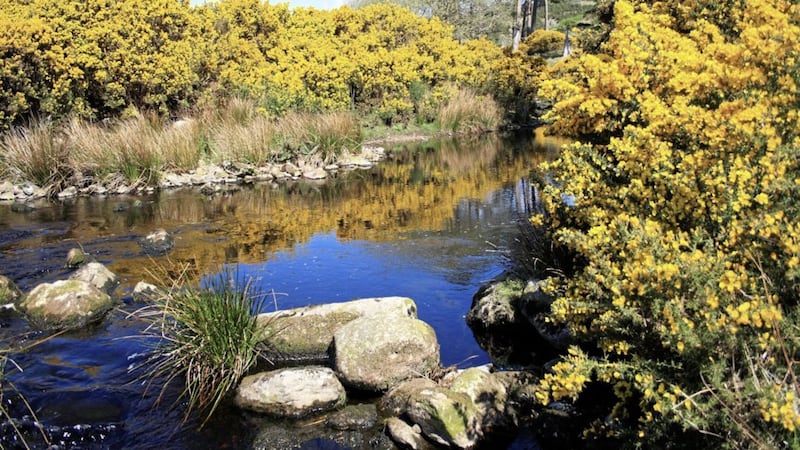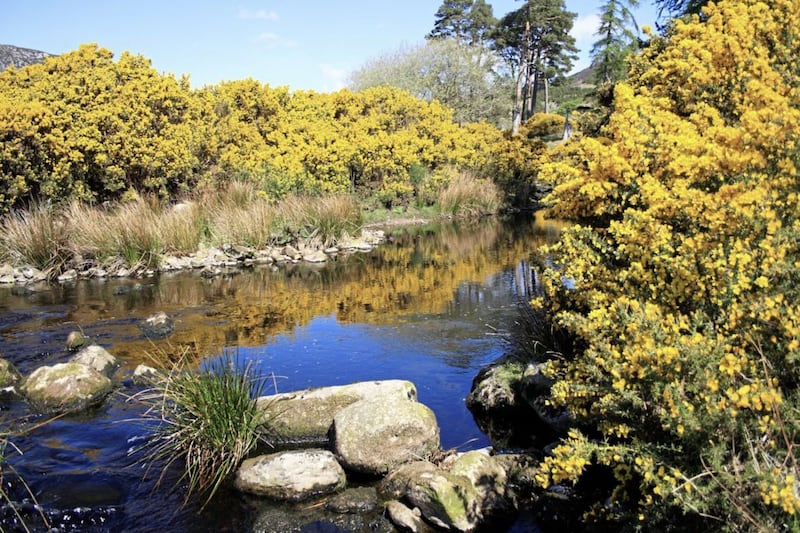DURING recent months, I have, like many, been looking for signs of transition from winter to spring, watching for the first snowdrops or wood anemones across the forest floor or our first swallow. These occurrences represent signature signs that spring is finally here.
Other subtle changes, signs I missed, have also heralded the changeover, such as the increased golden glow of the yellow gorse or furze bushes which have kept me company on daily walks.
Often called whin, they bloom for up to nine months of the year but are at their brilliant best now, brightening our hills and hedgerows with a golden yellow blaze. Their lengthy flowering period has led to the saying, "When gorse is out of bloom, kissing is out of fashion".
Gorse, Ulex Europaeus, the official flower of Belfast city, can grow to about two metres high and appears to have no leaves but instead, like a pine, their evergreen spines are modified leaves.
Extremely tough, sharp and prickly, these spiky-shaped spines keep water loss to a minimum, enabling the plant to withstand windy, dry conditions and flourish on poor soil. The plant’s old Irish name aiteann from aith meaning ‘sharp’ and tenn meaning ‘lacerating’ highlight its prickly nature and why it was such good hedging for containing livestock. The dense spines also form a protection against being cropped by sheep and cattle, while also providing shelter and protection for small mammals, insects and nesting birds.
As one of the sacred woods, branches of gorse were gathered and included in the Celtic Beltane bonfires of our ancestors. Stock was herded between these for purification and protection before being released on to the summer grazing. When this tradition diminished, torches of furze were still carried around the herds and farm buildings to help cleanse the air and protect the animals against sterility and parasites.
Other pagan associations with the yellow gorse included the notion that it harboured witches within its spiky domain and thus it would be set alight on May day to flush them out. The Welsh bard Taliesin in the Cad Goddeau (The Battle of the Trees; a 14th century Welsh poem) tells of how, "Great was the gorse in battle", but also how it is "ill-behaved, Until he is subdued", a possible link to the old and current practice of routinely burning the bush around the spring equinox, so that new tender shoots could be grazed by sheep.
Gorse has a long history of practical use in Ireland. According to the Civil Survey 1654-56 of landholding in Ireland, gorse-covered land was considered to have high economic value and made up a substantial acreage of land which was described as ‘profitable’ in many parts of the country. (Lucas, T, 1958, Furze: A survey of its uses in Ireland). Its value came from use as horse and cattle fodder, a wood fuel and as roofing material.
The existence of the Irish word ‘cnocadóir’, a ‘furze gatherer’ confirms its importance then as an important resource. Lucas also recounts how gorse was used as an alternative foundation for roads, after the destruction of Ireland’s woodlands in the 16/17th centuries reduced the availability of the traditional log as the underlying layer. Gorse timber was also used to make hurleys and walking sticks, a ‘furze hurley’ known as a spaic aitinn or spealóg.
Many have also noted its widespread use in Ireland for medicinal purposes to treat coughs, sore throats and even hiccups. Examining its cultural and practical history reveals how important gorse was to our forebears and their deep connection to the natural world. How times have changed.


